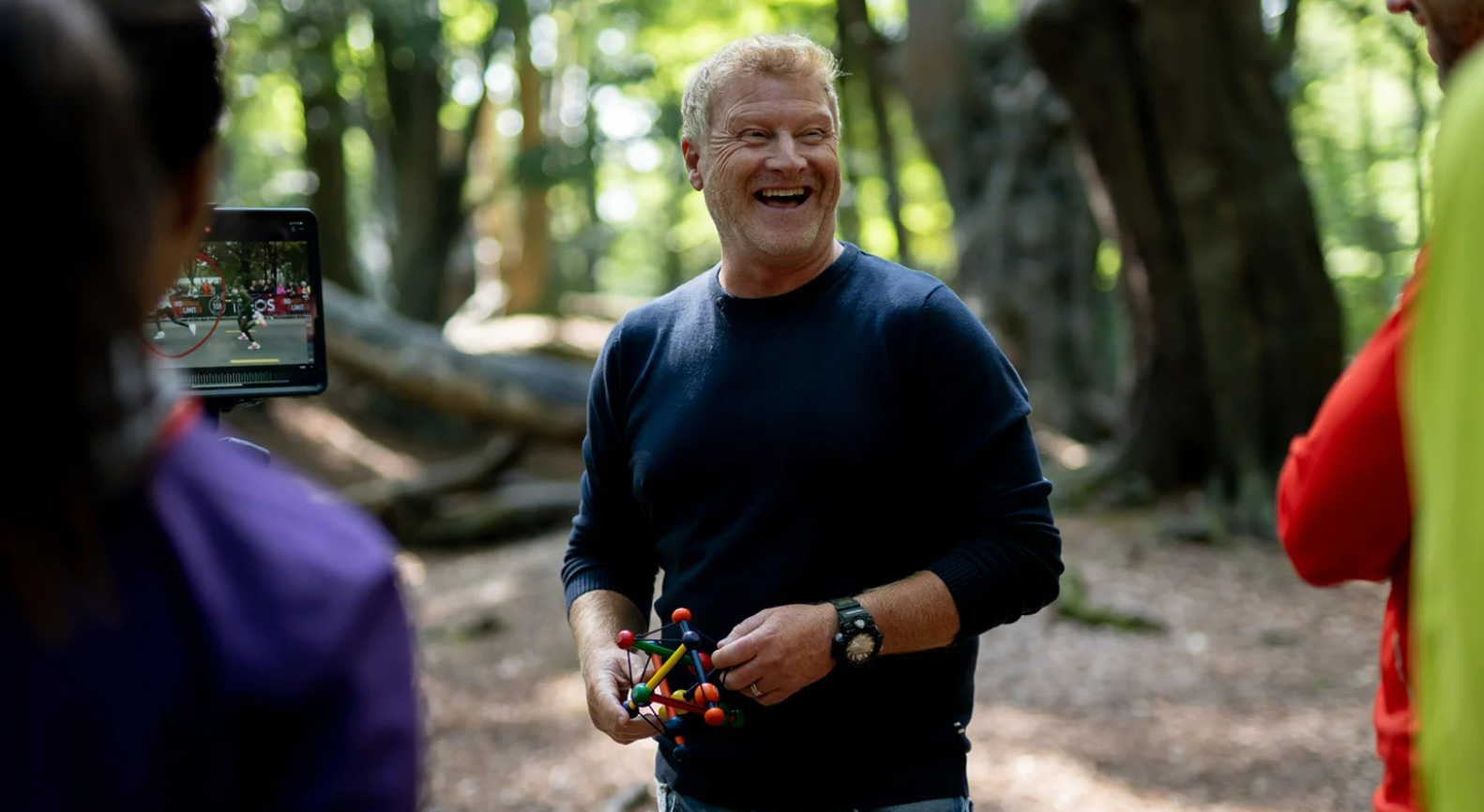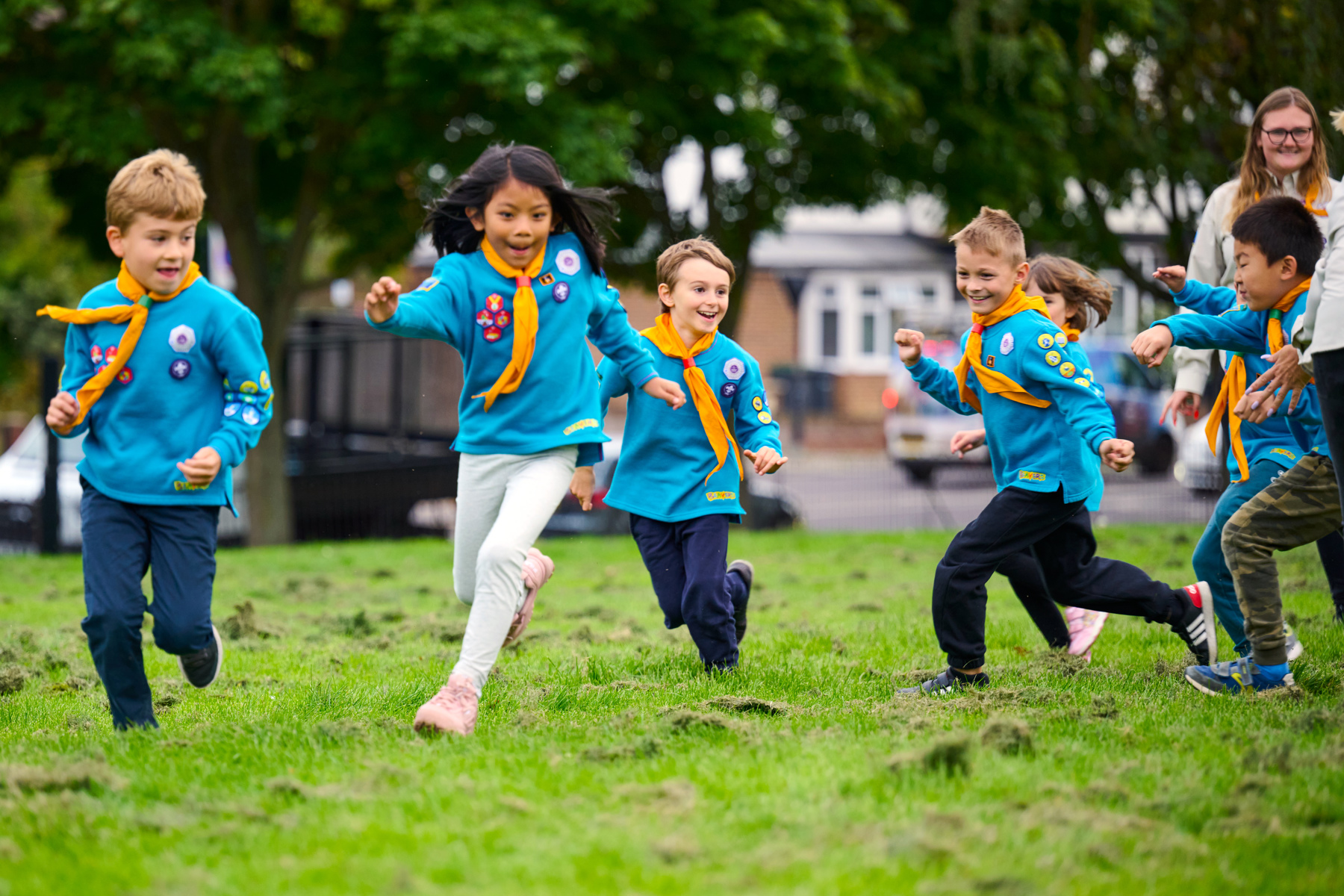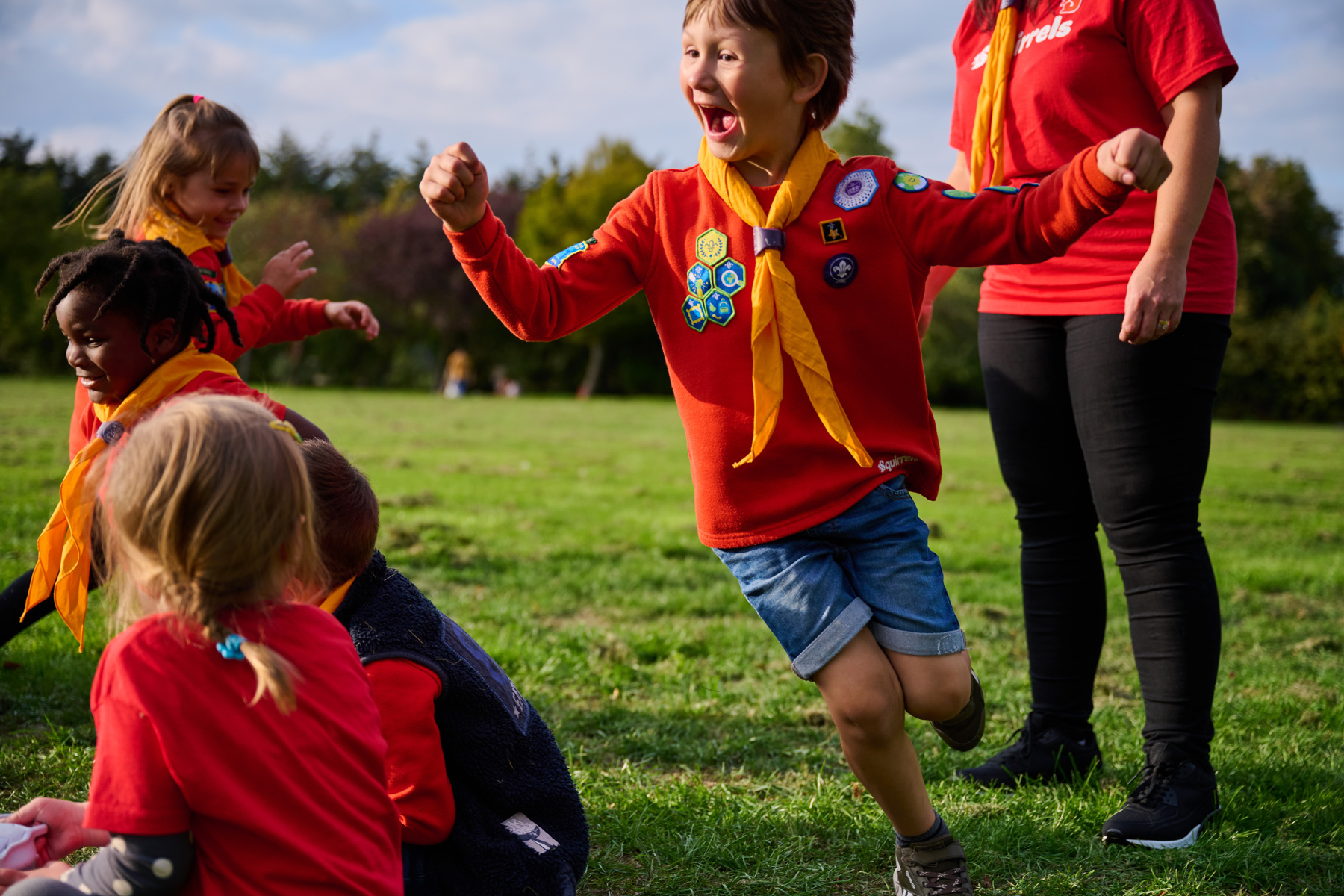Keep on running: How to move freely and enjoy your exercise
Shane Benzie, author of The Lost Art of Running, has helped some of the world’s best runners be at their best. Ahead of the 2023 London Marathon, he shares some of his insightful tips with Scouts and volunteers who want to move more freely and enjoy exercise more – whether running 26 miles, or just dashing around the block.
I was one of those kids who woke up bursting with energy. I would run to school and play out until my mum dragged me in. I grew up on an estate when there wasn’t much to do. So playing football and getting out on our bikes was a big release.
Today, we just don’t see children playing outdoors in the park as much as we used to. There are so many distractions now, especially with social media and gaming.
Obviously, times have changed but being outdoors and getting exercise is still as important as ever. Without this, young people miss out on the physical and mental health benefits, but also opportunities to learn how to cooperate and organise themselves, which is what Scouts do so well.

Doing what we’re designed to do
Before I studied human movement, I used to study sharks. Because the Great White Shark has been around for over 400 million years, it’s had a long time to get really good at what it does, which is swimming, eating seals and having baby sharks. Its environment hasn’t really changed, so it’s thrived.
But humans have only been around for about 300,000 years. In that time, we’ve gone from being hunter gatherers to farmers; to being part of the industrial revolution and now the technological revolution. So actually a human is almost like a fish out of water.
If we’re sat in front of a computer all day, we’re not doing what we were originally designed to do. Instead, we need to move more, even while working. Perhaps we should be standing up at our computers, for example (like I’m doing right now) rather than sitting. By standing up, I’m training my body for eight or nine hours a day, rather than detraining it.
Understanding how our bodies work
I was speaking to our local Scouts at Goring Heath. The leader contacted me and asked me to chat with them about running for their Athletics Badge. One of the things they did on the night was making and watching a video of themselves running. The best way to understand your movement is to see it.
I explained that the 206 bones that make up your skeleton are actually floating. No bone touches another bone – they all sit in an elastic sea of tension created by your tendons and ligaments.
When you move, your skeleton is free flowing in a sea of energy. Each bone sits in its own elastic trampoline. If you stand beautifully tall all day, then you’re creating a beautiful sea of energy and your body will be able to spring and flex. If you sit crouched all day, or run in a cramped way, you don’t have this wonderful freedom.
When you run tall, you load the elastic energy in the body. All the joints are sat in the right place, and you can run with a lot more freedom. My job when I work with athletes is to help them understand this and liberate them. To help people learn this young is just as important.

But why should we run?
As a western world, we’re not moving as much as we should. Movement is medicine. When you run, your bones become stronger. Your cardio vascular system improves. Mentally you’re better off too – it increases your ability to learn.
One of the great things about running is that you can just do it. You don’t have to find a venue or buy lots of technical equipment – you can just do it. Even walking is good.
The morning mile
In your brain, there’s about ten things going on at the same time. When we run, all of those system fire at a higher level. It’s a great kick start to the brain.
You’ll have heard of schools who are doing ‘the morning mile.’ Not only does this make young people feel good at the start of their day, it improves learning too. And if you can get someone excited about doing something, they’ll do it a lot more.
I went back to the Scout group about six weeks after my first visit and it was such an honour to hand out their Athletics Badge.
To watch in full screen, double click the video
Shane shares a message for the 14 Scout runners in the London Marathon
Getting into good habits
When it comes to running, people just do it. This is both a good and a not-so-good thing. Often, people don’t feel they need any coaching, as they would in other sports, and consequently, can get into some bad habits.
The biggest pitfall is landing on your heel on a straight leg when you run, which is very jarring and unstable. I’ve worked with over 4,000 runners one to one, and 84% heel strike on a straight leg. We almost run with a walking gait.
Your foot is the interface between you and the ground, so we need you to land on a tripod. Believe it or not, you’ve got a quarter of a million nerve endings on the sole of your foot. There are more nerves in the sole of your feet than there are in your hand. They tell you how hard you hit the ground, and give you a perception of effort and spatial awareness as well.
If you don’t land well, you don’t get that vital information to the brain. But if you land on a tripod, with three parts of the foot making contact with the ground, it gives you a lot more stability.
A stone age brain in a space age world
I wrote a book called the Lost Art of Running. I called it that because we’ve lost the ability to do it well. It was 15,000 years ago that we were hunter gathers. We still have the ability to run, we just need to rediscover it. We’ve got a Stone Age brain in a Space Age world.
I’ve travelled all round the world, visiting tribes and indigenous people to understand the different kinds of human movement, as well as meeting some of the best athletes. I discovered some amazing things and met some incredible people.

Why we should run with our arms, not our legs
I was lucky enough to spend some time with Eliud Kipchoge who completed the first (still unofficial) sub two hour marathon in Vienna. He would tell me that he runs with his arms, not his legs. It sounds crazy but actually makes a huge amount of sense.
When you run, your right arm and left leg move together, and vice versa. That’s our kinetic chain. But it means our very clever right arm is very dominant over our not very clever left leg. When we’re running, this right arm is sending big messages to our leg.
If you run beautifully with your arms, your legs will do beautiful things. If your arms are just flopping around, being lackadaisical, your arms are basically saying to your legs, ‘take the day off because that’s what we’re doing!’
Top tips for better running
Fitness takes place during recovery. If you go running tomorrow morning, it’s in the evening when your body rebuilds itself - and that where your fitness improved. But you need to be careful not to over train – especially if you’re doing lots of other sports and activities.
Recovery time is important. Sleep is the elixir of life – as well as water of course. Good hydration is vital to good running. Lots of sleep, lots of water, and put gaps between different sporting activities.
My big top for all Scouts, and especially to the 14 Scout runners in the London Marathon, is to run tall, keep your head up and your eyes on the horizon.
The human head weights around 5kg. For every inch forward the head comes down, it loads another 5kg on the neck and the spine. If your head is up on the horizon, your balance and spatial position is also where it needs to be.
Flick your eyes down to see what’s going on. Run beautifully tall, and keep your eyes on the horizon. I know you’ll have a great day.
Find out more
Shane Benzie’s book, The Lost Art of Running, is available from all good bookshops.